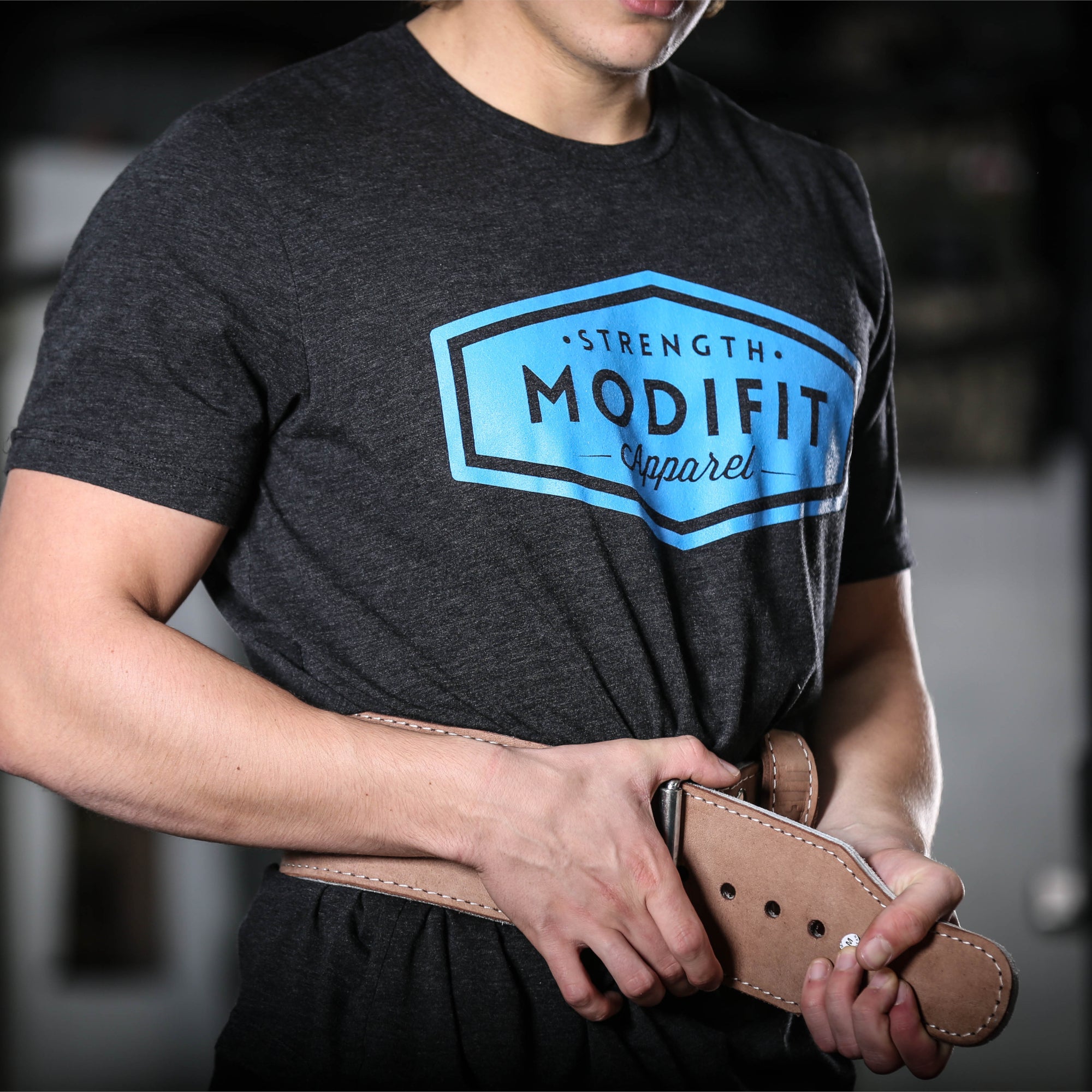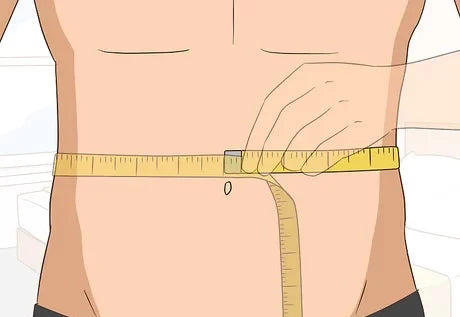
How to Measure Your Custom Weightlifting Belt Size
Not sure how to measure your custom weightlifting belt size? Our guide walks you through the process step by step. Find the right fit for your belt and optimise your lifting performance.
Weightlifting belts are an essential accessory for serious lifters. They provide critical support to your lower back, helping you maintain proper form during heavy lifts. But to truly reap the benefits of a weightlifting belt, it's crucial to find the perfect fit. In this blog post, we will guide you through the process of measuring for a weightlifting belt to ensure a comfortable, secure, and effective fit.
Step 1: Choose the Right Type of Belt
Before you start measuring, it's important to choose the right type of weightlifting belt. There are two main types:
- Weightlifting belts: These belts are 4" wide in the back and taper to 2.5" width in the front. They offer a comfortable fit, allowing for a greater range of motion during lifts.

- Powerlifting belts: These belts are the same width all around, typically 4" but 3" is also available. They provide maximum support and are ideal for those focusing on powerlifting exercises like squats and deadlifts.

Step 2: Find Your Natural Waist
To get an accurate measurement, you need to locate your natural waist. This is the narrowest part of your midsection, typically located just above your belly button. Stand up straight and use your fingers to find the spot where your sides bend when you lean to one side. This is your natural waist.

Step 3: Measure Your Waist Circumference
Using a flexible measuring tape, measure the circumference of your waist at the natural waistline. Make sure the tape is level and snug, but not too tight. Record this measurement in inches.

Step 4: Refer to the Belt Size Chart
We have individually size charts for the different belt types, as they all vary slightly. We do 3 belt styles as mentioned above:
- Olympic Weightlifting
- Prong Powerlifting
- Lever Powerlifting
For weightlifting belts and prong powerlifting belts you want to be half way along the given range, whilst lever belts you want to be more than half way along, ideally around 3/4 towards the end of the range (to avoid a lot of excess belt underneath which can be uncomfortable). That said we've put together a handy box below to choose the right size belt. Simply enter your stomach measurement and it'll show the size you need:
Select Your Stomach Size Range:
MEASURE AT BELLY BUTTON IN INCHES - DO NOT USE YOUR TROUSER SIZE
| Size Range | Weightlifting | Prong Powerlifting | Lever Powerlifting |
|---|---|---|---|
| 20'' to 22'' | S | S | S |
| 21'' to 23'' | S | S | S |
| 22'' to 24'' | S | S | S |
| 23'' to 25'' | S | S | S |
| 24'' to 26'' | S | S | S |
| 25'' to 27'' | S | M | S |
| 26'' to 28'' | S | M | S |
| 27'' to 29'' | S | M | S |
| 28'' to 30'' | M | M | S |
| 29'' to 31'' | M | M | M |
| 30'' to 32'' | M | L | M |
| 31'' to 33'' | M | L | M |
| 32'' to 34'' | M | L | M |
| 33'' to 35'' | L | L | M |
| 34'' to 36'' | L | XL | M |
| 35'' to 37'' | L | XL | L |
| 36'' to 38'' | L | XL | L |
| 37'' to 39'' | XL | XL | L |
| 38'' to 40'' | XL | 2XL | L |
| 39'' to 41'' | XL | 2XL | XL |
| 40'' to 42'' | 2XL | 2XL | XL |
| 41'' to 43'' | 2XL | 2XL | XL |
| 42'' to 44'' | 3XL | 3XL | XL |
| 43'' to 45'' | 3XL | 3XL | 2XL |
| 44'' to 46'' | 4XL | 3XL | 2XL |
| 45'' to 47'' | 4XL | 3XL | 2XL |
| 46'' to 48'' | 5XL | 4XL | 2XL |
| 47'' to 49'' | 5XL | 4XL | 3XL |
| 48'' to 50'' | 6XL | 4XL | 3XL |
| 49'' to 51'' | 6XL | 4XL | 3XL |
| 50'' to 52'' | 7XL | 5XL | 3XL |
| 51'' to 53'' | 7XL | 5XL | 4XL |
| 52'' to 54'' | 7XL | 5XL | 4XL |
| 53'' to 55'' | 7XL | 5XL | 4XL |
| 54'' to 56'' | 10XL | 6XL | 4XL |
| 55'' to 57'' | 10XL | 6XL | 5XL |
| 56'' to 58'' | 10XL | 6XL | 5XL |
| 57'' to 59'' | 10XL | 6XL | 5XL |
| 58'' to 60'' | 10XL | 7XL | 5XL |
| 59'' to 61'' | - | 7XL | 6XL |
| 60'' to 62'' | - | 7XL | 6XL |
| 61'' to 63'' | - | 7XL | 6XL |
| 62'' to 64'' | - | 8XL | 6XL |
| 63'' to 65'' | - | 8XL | 7XL |
| 64'' to 66'' | - | 8XL | 7XL |
| 65'' to 67'' | - | 8XL | 7XL |
Step 5: Consider Your Clothing
Keep in mind that you'll be wearing your weightlifting belt over your workout clothes. If you typically wear thick or layered clothing during your workouts, add an inch to your waist measurement to account for the extra bulk.
Step 6: Test the Fit
Once you've received your weightlifting belt, it's important to test the fit. Put on your workout clothes and wrap the belt around your waist. It should be snug but not uncomfortably tight. You should be able to fit one or two fingers between the belt and your body. A common misconception is to suck your stomach in and tighten as much as possible. You need to brace against the belt and breathing in when tightening the belt will stop you from doing this.
Conclusion
Measuring for a weightlifting belt is a simple process, but it's crucial for maximising your lifting performance and avoiding injury. By following these steps, you'll be well on your way to finding the perfect fit for your weightlifting belt. Remember, a well-fitted belt is an investment in your safety and success as a lifter. Happy lifting!
Now that you know what size and belt you need, you can view our custom belts or our own limited edition designs here:




